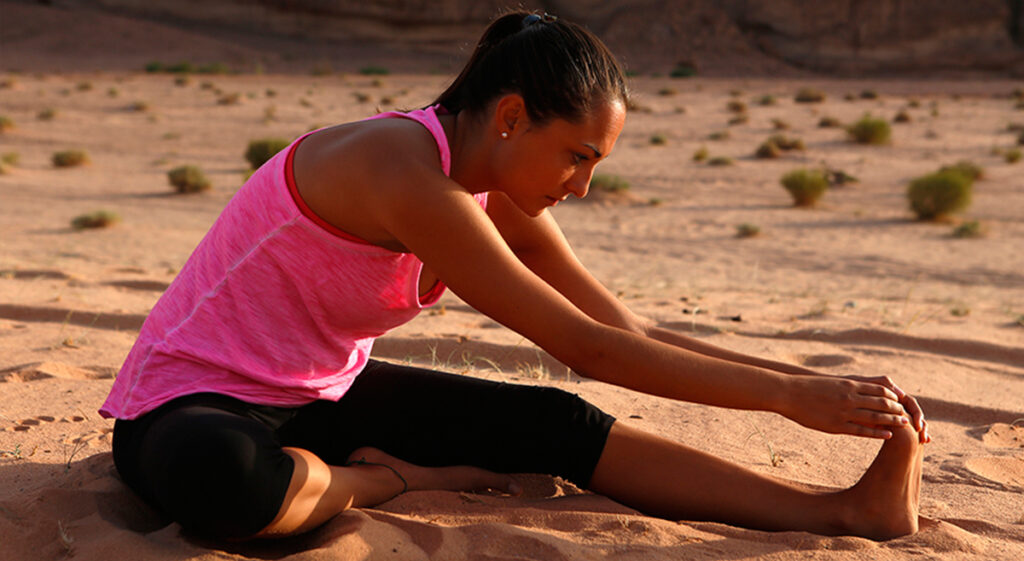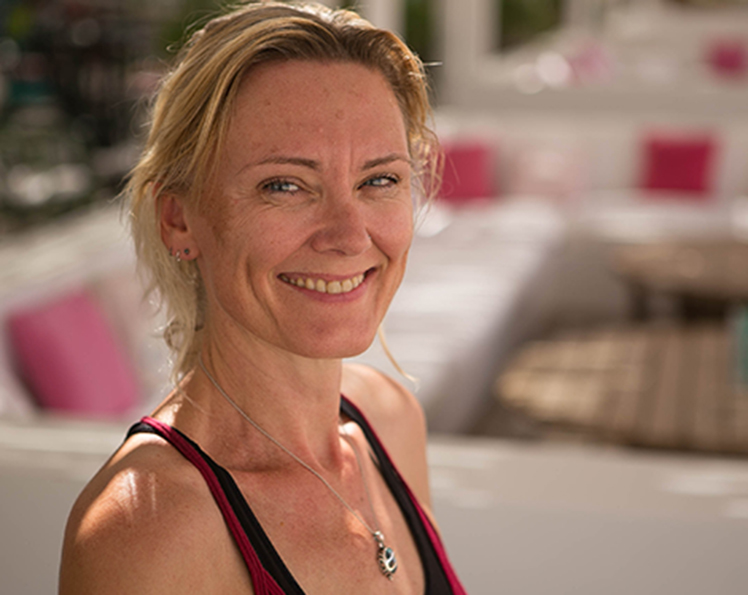Many people start yoga because they need more peace of mind, while others start because they want to become physically stronger and more flexible. Yoga offers all this. But did you know that yoga can also make you mentally flexible and increase your resilience?
Our lives are full of stimuli, challenges, changes, obligations and expectations. This can sometimes cause (too) much stress and resistance.
That is why good mental resilience is important; the ability to deal with stress and to maintain inner peace.
Resistance to change
Change in your life is inevitable. A change can be small or very big, you can choose it yourself or it can be completely unexpected and you just have to deal with it. |
Feeling resistance turns out to be a very natural reaction of ourselves because our brains like predictability and routine and change can disrupt that certainty, making you feel uncomfortable. It can make you insecure or perhaps even frustrated or angry.
In my previous blog I go deeper into why we can resist change. You will also find 11 questions you can ask yourself that help when you feel resistance to change.
What is mental resilience?
Mental resilience is also described as a combination of self-confidence and determination. You can deal with emotional challenges and stress without losing yourself and you keep going even when things are tough. You have good adaptability and set your boundaries and are self-aware.
How can yoga help with mental resilience and resistance?
Yoga is, as you probably know, much more than a number of physical postures. It also helps you learn to deal with emotions. Not by suppressing them, but by consciously feeling them, by slowing down and letting go.
There are many forms of yoga with quite a few differences and similarities. What suits you, at this moment, is very personal. Whichever form you choose, below are some points on how yoga specifically contributes to stronger mental resilience:
Practicing mental and physical flexibility
During yoga, you will quickly notice where your physical stiffness is and where your physical flexibility is. This can differ per lesson. If you practice yoga regularly, your body will become more flexible. But yoga also helps you to become mentally flexible. Some postures require strength, others softness and surrender. By practicing with discomfort in your body, you also develop mental flexibility. You learn that resistance is okay instead of fighting it.
Asanas (yoga postures) help to release built-up tension in muscles, such as in your shoulders and neck. This tension can be caused by emotional events. By regularly releasing physical tension, you prevent it from building up further.
Breathing through feelings of stress and discomfort
An important part of yoga is breathing (pranayama). By consciously breathing you calm your nervous system, which allows you to regulate stress and reduce feelings of panic, for example. You become more aware of how you breathe and where, when you hold your breath or breathe less well and that you can continue to breathe calmly when you feel uncomfortable. Specific breathing exercises can also activate you, others increase your lung capacity and exercises that provide more oxygen to your lungs.
Acceptance and Letting Go
If you already practice yoga, you will probably recognize it; during a class the teacher introduces a posture (asana) that you do not like, that you want to get out of sooner than the rest of the group, a posture that frustrates you because you ‘can’t do it’ and the rest can, that hurts (always stop in case of real pain!), etc.
But these postures help you to experience how discomfort arises, where it is and therefore often also becomes less or even disappears again. This helps you develop more acceptance. You learn that it does not have to be ‘perfect’ and to stay present in the moment. This strengthens your emotional resilience.
Resistance in a posture can also give you insight into how you deal with it in your daily life; do you fight, do you give up, do you accept, do you compare yourself to others, do you embrace what is there?
Many yoga classes end in Savasana (the ‘corpse pose’), where you practice total physical and mental relaxation, letting go of all the muscles in your body as well as negative thoughts and feelings.
Increase self-awareness
Yoga invites you to reflect on your thoughts, emotions and physical sensations, without judging yourself. This helps you become more aware of what is really going on and to recognize more quickly when you are out of balance and what you need to get back to yourself. If you are more aware of what is going on mentally and physically, this strengthens your ability to deal with difficult feelings instead of resisting them. Yoga invites you to be in the here and now. Every posture, every breath is an exercise in presence. The exercises on your mat therefore have a positive effect on your daily life.
Building trust
Yoga teaches you to know your possibilities and limitations of your body and mind and to accept what is there at that moment, you become more aware of your breathing and can change it, you learn to know your boundaries better and indicate them. When you connect more with yourself, your confidence in your ability to deal with challenges in your life grows.
Which form of yoga is best for letting go and acceptance and increasing mental resilience?
I have been teaching various forms of yoga for many years. And personally, I sometimes need one form more and then another. And as I wrote before, which form suits you is very personal and can therefore also differ per period. Perhaps you like to follow an active lesson in the morning one day a week and a quiet form in the evening on another day. It is all possible.
I have also been practicing yin yoga for several years now and I also teach it. To be honest, I first thought it was a nice easy form. But no matter how easy it seems from a distance, this form really has its challenges and is not as easy as it seems.
For me it is really the ultimate form of practicing acceptance and letting go. Because you do not move all the time and are in the same position for a long time, you are challenged to surrender, to be aware of what is going on and thus to accept whatever is there. Also, thoughts come much more easily, or at least you are more aware of them, because you are not distracted by a movement.
For me personally, it took a few lessons before I really felt what yin yoga is and what it does to you.
So whatever form you choose, embrace resistance, mentally and physically, because from resistance we can grow. It invites you to create space, literally and figuratively and ensures that you develop further and become more resilient.
Hi, my name is Jolinda, and I work as a holistic health practitioner. I provide yoga and meditation classes and massage and Reiki treatments, mindfulness training and happiness coaching,.
With my blogs I hope to inspire you to make positive changes into your life. For more ideas and tips check out my page Jolindas inspiration. Free trainings and videos you can find at free downloads and videos
Would you like to be kept informed and inspired? Then sign up for my newsletter.

